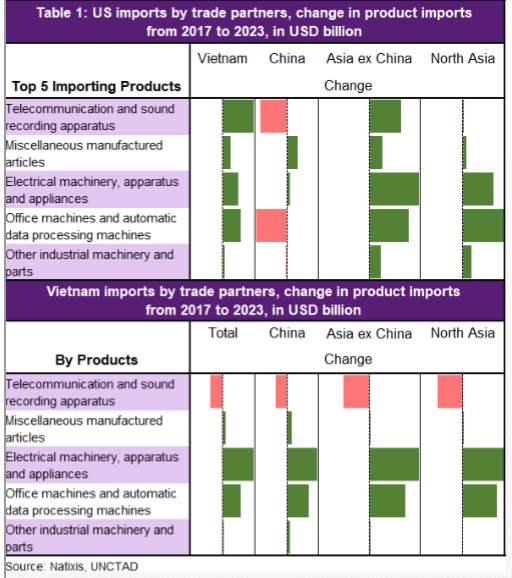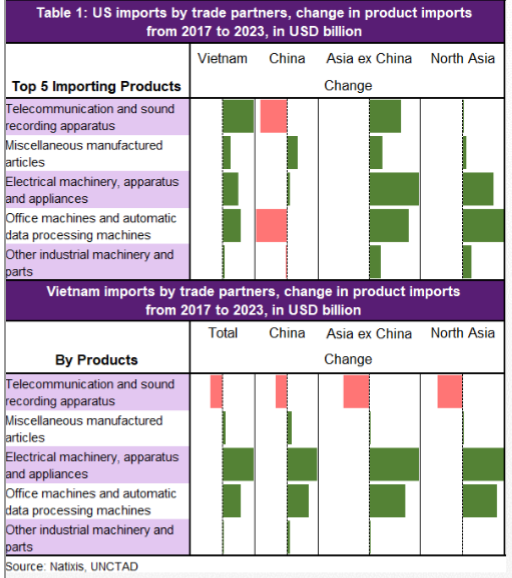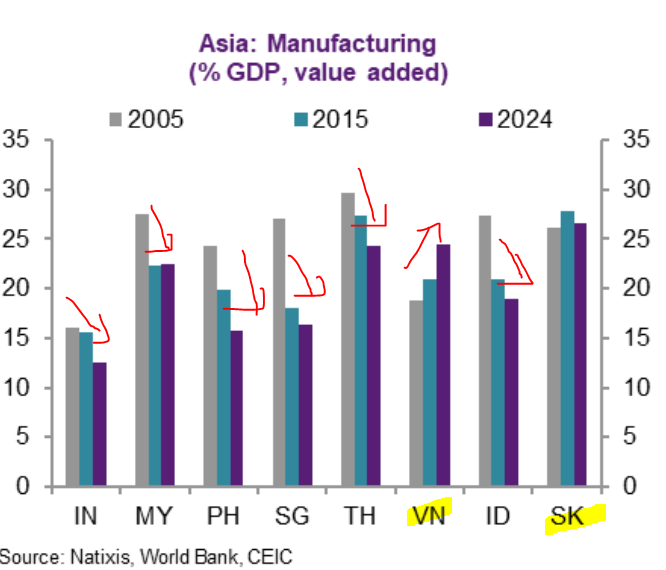Good morning from Poland 🇵🇱☀️ ! Shall we speak a bit about Asian economics, namely Asia & oil today? 

Before we talk about Asia & oil, let's go through data we didn't (Friday was a holiday in Hong Kong & I was flying & don't forget that mainland China is off this week). Remember that China manufacturing PMI (state) was bad on power outages + demand.
But EM ex Asia doing better.
But EM ex Asia doing better.

Notably, India is doing better, another month of expansion - we'll speak about why that will put some pressure on the current account. Indonesia great! Again, IDR is my favorite EM Asia FX at the moment for reasons u know - got better mobility + amazing trade + high yield. Good!! 

Vietnam still doing very badly but that was September & the heat it got for shutting down factories will lead to normalization/living w/ the virus. Other ASEAN also doing better. Look at Malaysia. The Philippines also a bit better.
Overall, weak but trend is on the mend!
Overall, weak but trend is on the mend!

Now that you see some activity indicators, let's talk about oil & Asia. When people say that in the macro world, 2 things: impact on CPI and of course the balance of payment - can u afford high oil prices & what meaning to FX etc. What are the CPI trends? Not that high like PPI. 

You can juxtapose Asian CPI with Western CPI (I'm in the West now but the East of the West, as in Eastern Europe), which went way higher & many much higher than in Asia. US CPI on par w/ India for example!!! But not just the US.
Anyway, back to Asia. PPI higher in Asia though!
Anyway, back to Asia. PPI higher in Asia though!

Which will dominate? Higher costs via supply shocks or demand still dampened by Covid etc? We did a quantitative analysis & found that historically, Asian CPI is much more impacted by demand shocks.
We say (& been proven right so far) that CPI not a huge concern if demand down.
We say (& been proven right so far) that CPI not a huge concern if demand down.

Now, how do u link news like higher oil prices/power shocks to structures of economies & distilling losers/winners.
1st, let's look at trade in Asia (chart show net): We import commodities & export manufactured goods for the most part as we're people rich & resource poor.👈🏻
So?
1st, let's look at trade in Asia (chart show net): We import commodities & export manufactured goods for the most part as we're people rich & resource poor.👈🏻
So?

The largest deficit of commodity goes to China, Japan, South Korea etc. Basically the traders. They take their comparative advantage of people + capital & import commodities & add value to it & then export goods like textiles, electronics, cars, chips. China biggest trader of all 

When oil/energy/commodities go higher, that means Asia's input costs go higher (by that I mean manufacturers') & u see that in PPI.
Note CPI hasn't gone up much as China CPI sub 1%. So? Manufacturers feel SQUEEZED. Hence PMIs terrible. Need to raise prices or reduce production.
Note CPI hasn't gone up much as China CPI sub 1%. So? Manufacturers feel SQUEEZED. Hence PMIs terrible. Need to raise prices or reduce production.

News about China power outages is about how the industry is structured. Coal is key for electricity (>70% of electricity) but domestic coal production reduced + imported coal prices went higher + prices suppressed so few incentives to produce more for smaller players. So outages. 

And that story is played out across the world for places with higher demand for power/commodity/energy but supply suppressed for many reasons (low investment due to change of energy strategy to less coal & more green etc). Choices must be made between prices & quantity of energy. 

These aren't good choices. If u lower quantity consumed not through higher efficiency but sheer outages, then u got lower output of production/consumption (e.g. China). If u allow firms to raise power prices, then u got higher costs everywhere. No matter what, here are the losers 

The losers are the net importers of fuels (orange in chart is fuels). They are everyone in Asia except Australia, Indonesia, and Malaysia (Brunei too but I don't use it). Tough choices ahead. Look at India. Not a huge trader but 3rd largest importer in Asia for consumption. And? 

I explained last week that India source of electricity is coal (and also import oil for other uses) & coal reserves down. Meaning they have to face higher domestic auction prices or import expensive coal. Beyond coal, oil import is expensive too. Plus India demand is recovering!! 

Preliminary data shows that merchandise exports rose 21% in September to USD33.4b, while imports jumped about 85% to $56.6, the trade ministry said. Oil imports surged 199% to $17.4bn!
Rupee weakened as a result. But don't despair, India should get decent capital inflows to help
Rupee weakened as a result. But don't despair, India should get decent capital inflows to help

And this is no BOP crisis (the ability to pay for imports) as India got plenty of reserves + capital flows likely decent.
Anyway, WINNERS? I pick Indonesia. Malaysia + Australia too but let me explain why not as good.
Anyway, WINNERS? I pick Indonesia. Malaysia + Australia too but let me explain why not as good.

While Australia is the largest commodity trader in Asia - massive - it is mostly iron ore where it is getting its foreign FX. And iron ore is down as China curbs steel production + outlook on real estate sector meh (have u heard of Evergrande?) So? While fuels gain, iron ores sag 

Malaysia also got goodies like natural gas etc but it also has tons of manu so its gains on natural gas is mitigated by the manufacturing sector sagged by higher input prices. Either way, still better off than the rest.
Indonesia is a clear gain. Got oil, natural gas, palm oil
Indonesia is a clear gain. Got oil, natural gas, palm oil

You can see it in the bond market, FX etc that Indonesia is doing well & it remains my fav
Btw, u would have known this already if u followed my ASEAN supply chain note where I went through each country's trade structure.
U must know structure to decipher cyclical trends 🤗👈🏻.
Btw, u would have known this already if u followed my ASEAN supply chain note where I went through each country's trade structure.
U must know structure to decipher cyclical trends 🤗👈🏻.
Btw, equity analysts are cutting target prices of footwear stocks on supply issues on 4 October.
@Trinhnomics wrote a note on 12 August highlighting this will happen as ASEAN got Covid!!!

@Trinhnomics wrote a note on 12 August highlighting this will happen as ASEAN got Covid!!!


• • •
Missing some Tweet in this thread? You can try to
force a refresh









